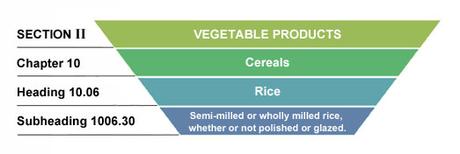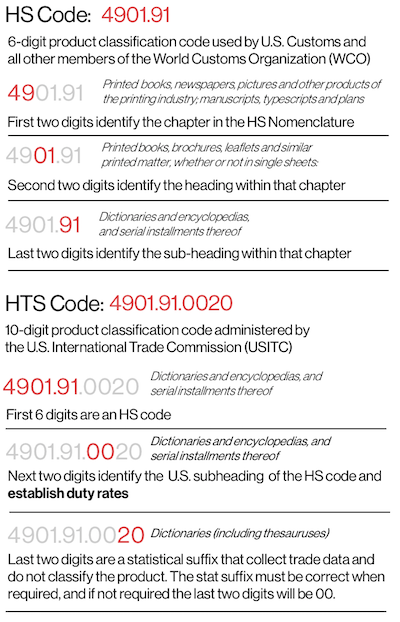All around the world, more companies and businesses are trading goods from one country to the other. So, it’s crucial in export and import or trading process to be well classified and have a standardized global classification system, for example, the HS Code system.
The HS code is globally utilized in the trading process. Whether you are an importer or an exporter, it’s crucial to study and understand HS system thoroughly in order to utilize it.
What is HS Code? And it’s Significance:
The Harmonized Commodity Description and Coding System, also named Harmonized System (HS), is an international standard system which includes numbers and names and in order to categorize the traded products. It came into existence in 1988. These are developed and sustained by the World Customs Organization (WCO).
Every single item that travels across the international boundaries has to be proclaimed to customs with the use of the HS code. Hence, the HS code is used in order to standardize and recognize shipment in a similar way whether it is from any country across the globe.
- This system is utilized by 200+ countries across the world and economies.
- It’s backed by well-interpreted rules in order to attain a balanced classification across the globe.
- HS code is also required to be displayed in export documents and business invoices all around the world.
- HS code is required to trade negotiations and in order to collect internal taxes.
- HS code is required in order to collect international trade statistics and more.
The HS code Structure:
- This code is well organized in a logical &legal structure.
- It is basically comprised of 5,000 commodity groups that are covered in 99 Chapters which again contain 21 Sections.
- This code is recognized by a 6-digit code
- This system is utilized by 200+ countries across the world and economies.
- Many governments put extra digits (which are different in each country) to the HS code or number to further differentiate between products in various categories.
Below is an example in order to understand the HS code Structure better:

Image Source: Wikipedia
As shown in the above image from Wikipedia, the two digits in the front nominate the HS Chapter. The next two digits nominate the HS heading and the last two digits nominate the HS subheading. Hence, the HS code 1006.30, for example, states the Chapter 10 (Cereals), the Heading 06 (Rice), and the Subheading 30 (the Semi-milled/wholly milled rice, whether or not polished/glazed).
Difference between the Harmonized System (HS) and Harmonized Tariff System/Harmonized Tariff Schedule (HTS):
Since we have discussed HS Code above, you might have understood that these Codes basically constitute to the classifications of goods.
Hence, it’s extremely important to study and understand the differences between the HS Code and the Harmonized Tariff Schedule (HTS). Because if not understood these well, the international shipment might get lost here or there creating a lot of confusions and other issues along with them.
Harmonized Tariff Schedule:
The Harmonized Tariff Schedule (HTS) Code is basically a 10-digit import classification system which is specific to the U.S.A. HTS Codes which are also known as HTS numbers is maintained by the U.S. InternationalTrade Commission (ITC).
It’s very important for the U.S. importers to know these codes well and use these correct HTS-US codes because the responsibility of the commodity is evaluated on the basis of this classification. The HarmonizedTariff Schedule (HTS) Code is in the similar form as the HS Code which has four differing last digits after the first 6-digits.
The first six digits of the code nominate the HS code, and then the additional classification is provided by the countries of import by assigning the subsequent digits.
Below is an example to understand HTS better:

Image Source: Flexport
Tariff Classification System:
Tariff Classification is basically the process of directing the right tariff code for the imported and exported items. Classification of goods has a lot of relevancy if we see it from a customs view point to be precise. It impacts:
- Customs duties,
- Import VAT,
- Origin management,
- Excise duties,
- Preferential duties, and
- Import and export restrictions etc.
And this is the reason for the importance of the correct classification and this is why it cannot be taken for granted. However, many companies frequently ignore the classification, which may result in consequential costs, for example, a false amount of duty payment or the in appropriateutilization of free trade protocols. This classification of goods is always ambivalent that can provide saving possibilities too by utilizing the competingtariff codes.
Why do HS Codes Classifications Matter For Companies?
No matter if you are an importer or exporter; you will have to utilize these classification codes for the correct classification of goods as a legal responsibility. In the case, if you fail to utilize them the correct manner then the shipments would get delayed, and hence, more checks and inspections might take place as well, and you might also find yourself stuck with huge fines or the penalties. The HS Codes are also equally crucial when it’s time to calculate the bottom line you have in order to save you some time as well assome amount of money.
This happens because when the customs go through your past imports history, they might find that you have already paid a fair amount of duty and have not taken enough advantage of the tariff benefits.
In order to allocate a specific tariff usually requires a fair deal of study and knowledge about the product, but this has to be conveniently done by an importer or exporter who has access to the entire Tariff and also understands the methodology of classification. Some items may also get qualified for thelower duty rates, but this will again depend upon the purpose they have or the relevantCertificates of Origin.
By the good knowledge of how the entire classifications process work, you will be able to double check that your revenue generation in terms of taxes or the duties is correct or not and can also often work along with your customs consultant or the broker to make sure that it is absolutely correct every time.
In the case where the broker or the consultant does not completely understand what the product is then the importer has to supply him/her with all the required details. However, in the real world, what often happens is that the consultants and brokers email over a page from the Classification Index and then they simply ask the importer to take out the HS Code with the correct6-digits.
This entire classification process works well because it basically put the responsibility on the importer who is having the legal obligation in order to show the correct HS Code every time.
What are the Challenges in HSCode Classification for Companies Globally?
The HS Code’s affirmation and versatility being utilized as an economic language globally and code for items have made it a necessary tool for international trading companies and businesses that are included into most of the customs clearance systems across the globe.
The utilization of the correct HS Code that is quite tricky in many instances as an analysis of the codes might vary between the customs authorities as well as countries. The inappropriate use of the HS Code could again result in an inappropriate tariff being applied by the customs that can enhance the cost of the imports highly to the consumer.
You might like: Meizu C9: Low Priced Phone with High Specification
Hence, using the correct HS Code and right interpretation is extremely important especially for an importer because the use of incorrect code could be concluded by customs as the violation, misleading or a wrong declaration which is directly related with its associated penalties.
So, when you are in doubt, it will always be advisable to consult the customs directly or the experts in the customs clearance companies for their advice on the correct HS codes usage.
Conclusion:
The HS Code used as a standardized methodology across the globe for sending the shipments across international boundaries is crucial in order to keep your shipment safe and identifiable and in order to reduce the number of risks associated like penalties by customs etc. Hence, if you’rein any importing or exporting business, you must understand the concepts of HSand HTS/Tariff codes used for every product and more.
